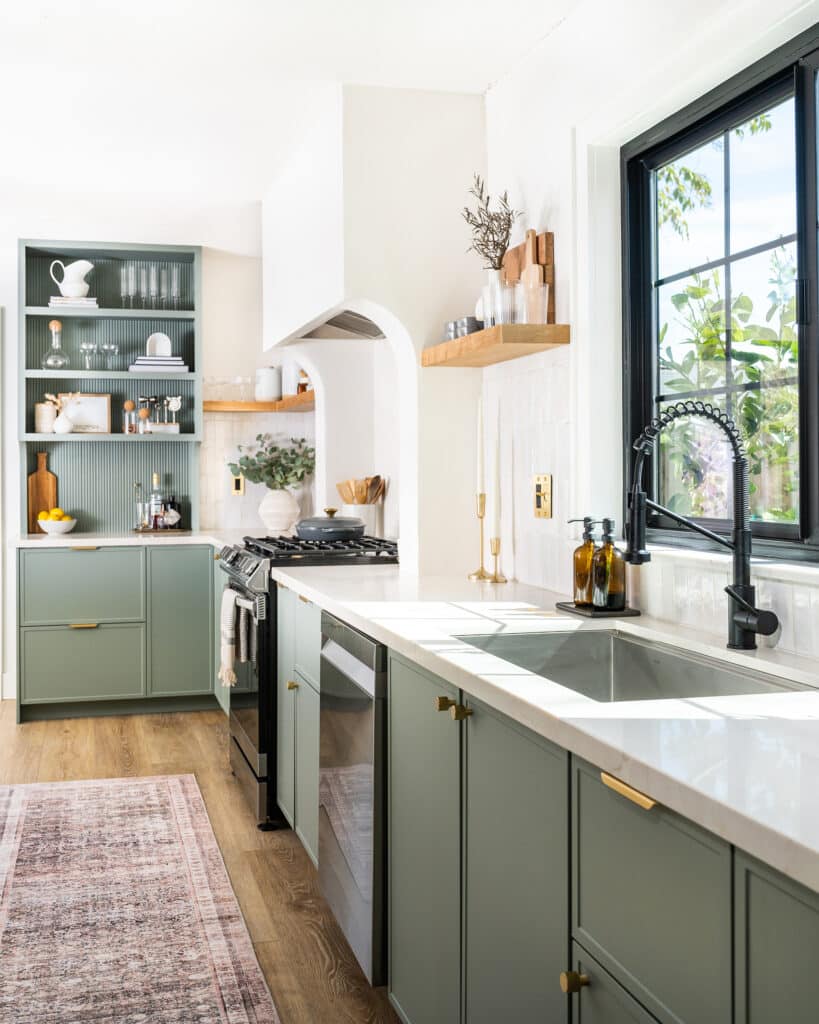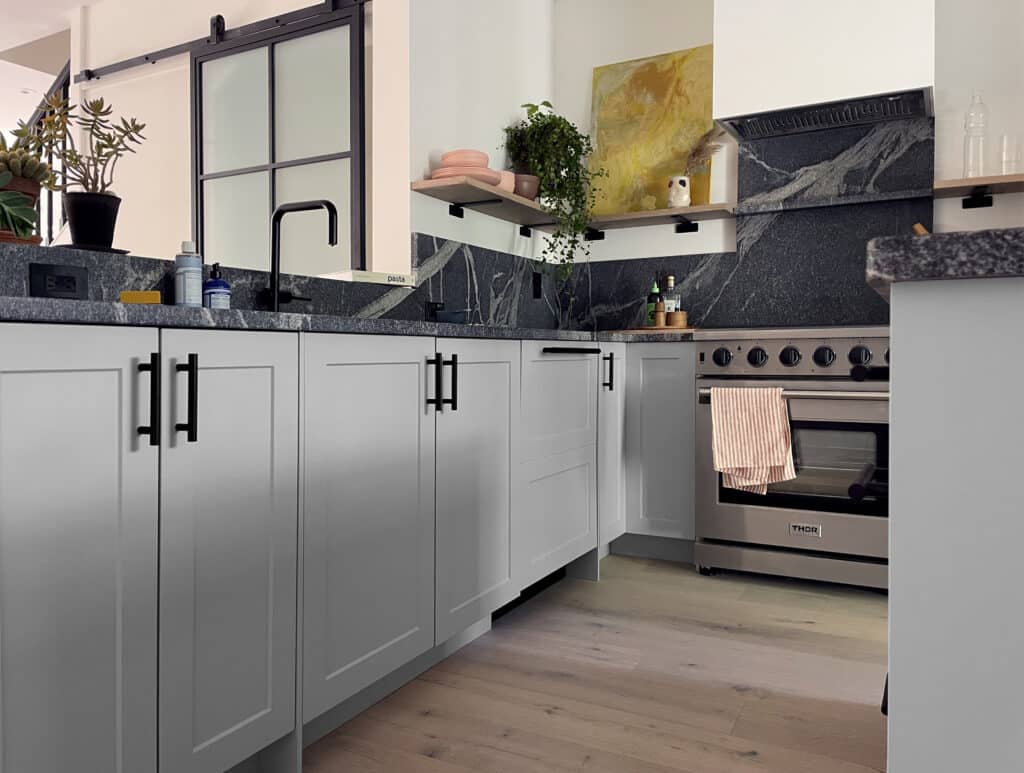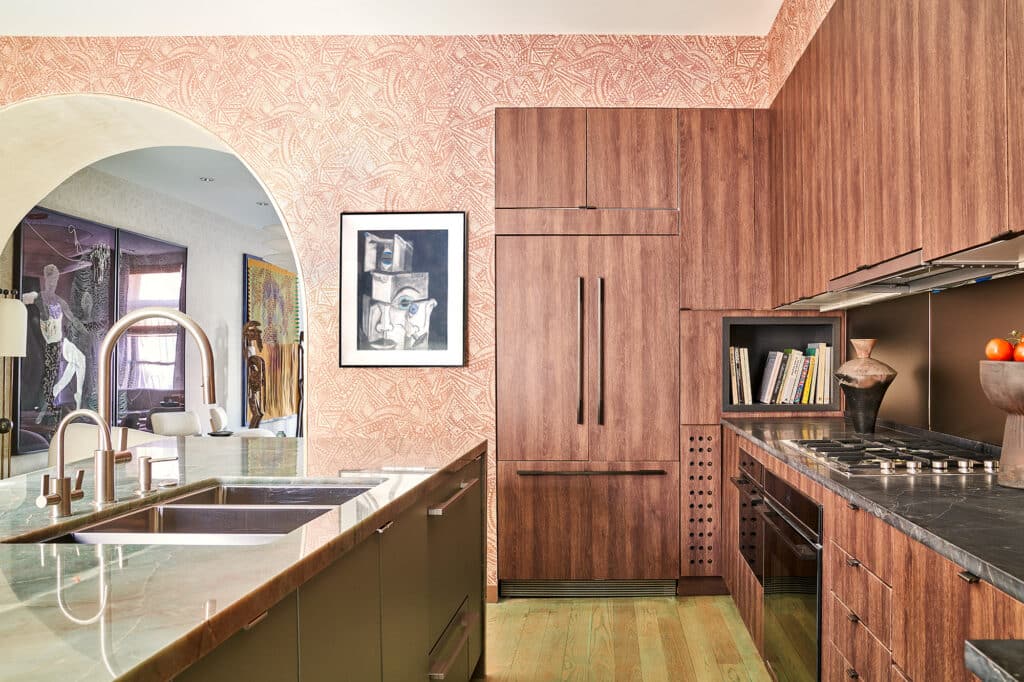When designer Albie K. Buabeng and her family moved into their three-story ranch home near Seattle, it was clear the kitchen would need some work.
It had been modified before she moved in, but despite having new appliances, it still had dated dark cabinetry, a closed-off layout, and speckled granite. “It was upgraded, but it wasn’t designed,” Buabeng says. “That’s a huge distinction people often miss.”
While signing the mortgage loan papers, Buabeng began mentally planning her renovation, which she initially hoped to complete in just four weeks. She wanted to break up the two L-shaped counters that made the space feel congested and add custom storage solutions for a galley-style kitchen her whole family could enjoy together.
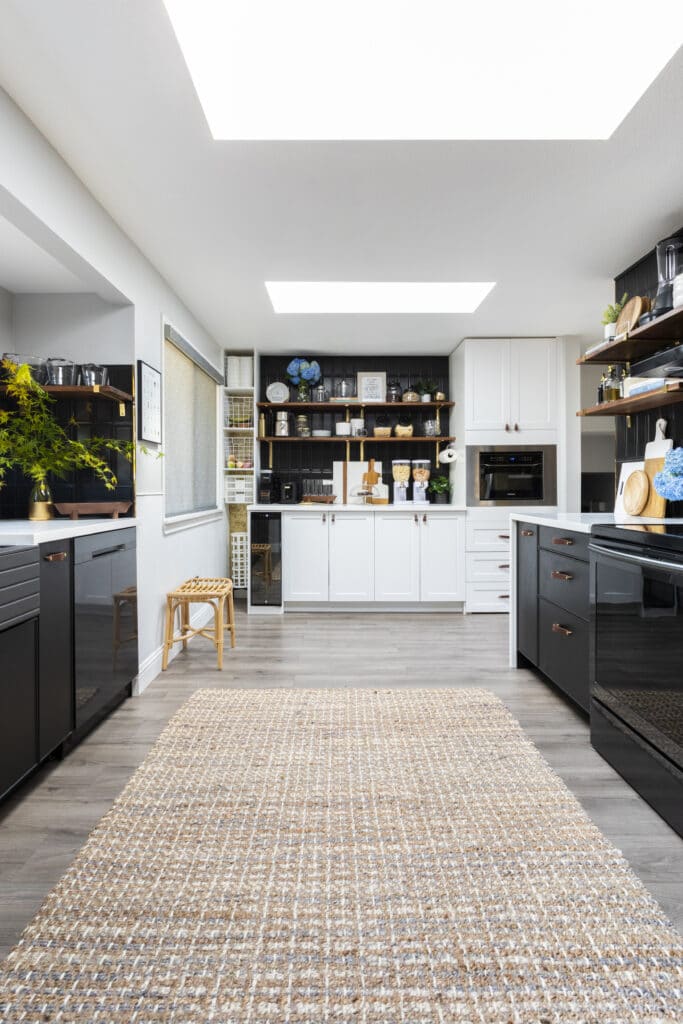
When it came to cabinetry, she considered Semihandmade but didn’t want to assemble them herself, so she opted for BOXI by Semihandmade, ready-to-install, go-anywhere cabinets made in the U.S. “It was that perfect medium for us, getting something that was semi-custom so it wasn’t prefab, but it wasn’t completely custom,” she says. “It was that sweet spot in between so it didn’t break the bank.”
While price and aesthetics drove Buabeng’s decision, she also liked that BOXI is dedicated to environmental stewardship, using particleboard and MDF melamine that are TSCA Title VI compliant, meaning they emit very low levels of formaldehyde. Plus, BOXI purchases Sustainable Forest initiative certified materials and recycles all solid waste, cardboard, and dust produced during production.

Design by Albie K. Buabeng; Photography by Ellie Lillstrom
It’s OK to Mix Cabinetry Colors
Hygge, the Danish concept of coziness and connection, informs many of Buabeng’s design decisions. “I go for cozier and more natural design elements, not the neutral and sterile type of design people may expect,” she says. “I didn’t want it to feel like a kitchen that was so new you couldn’t touch it.” Instead, the designer created a dramatic two-toned kitchen with both black and white cabinetry. “Everything is neutral but bold. I wanted a tuxedo kitchen, so that way everything else would pop like the wood shelves and plants,” she adds.
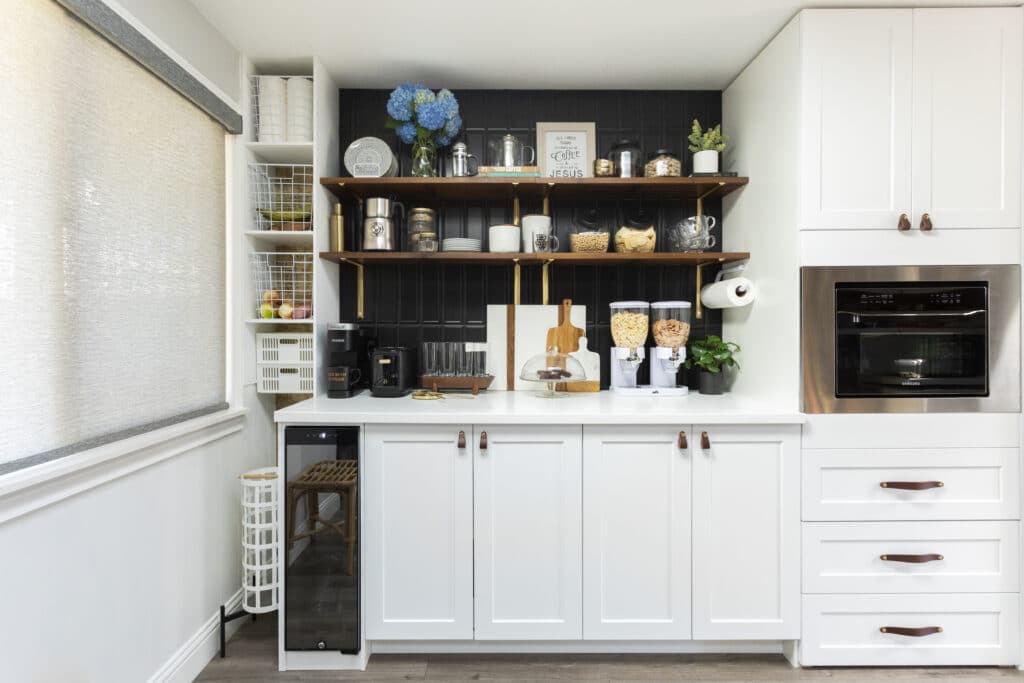
Opt for Floating Shelves Over Upper Cabinets
Careful planning allowed her to remove upper cabinets, which opened up the space. She used BOXI’s matte Black Peppercorn base cabinets on either side to create a beverage station with flanking storage. Above the white bank of cabinets, Rejuvenation slatted walnut floating shelves with brass brackets stand out against the black subway tile backsplash.
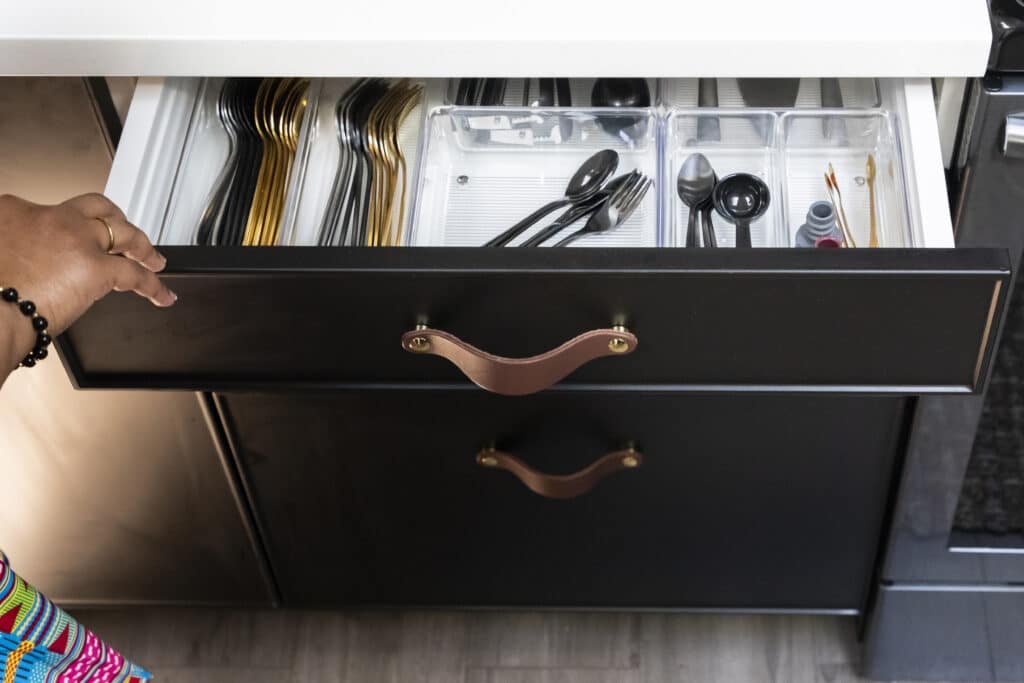
More is More When it Comes to Storage
Convenience was also key in her kitchen design scheme. Buabeng installed 10 drawers and nine pullouts, which maximize storage space in small kitchens and are an adaptive choice fit for all ages and abilities. She only resorted to shelves where pullouts wouldn’t fit. Her mother, who struggles with arthritis, loves that she doesn’t have to get on the floor to reach a jar in the back of a cabinet. “Her mind was blown,” says the designer. “Just being able to bring the shelves to her was a game-changer.”
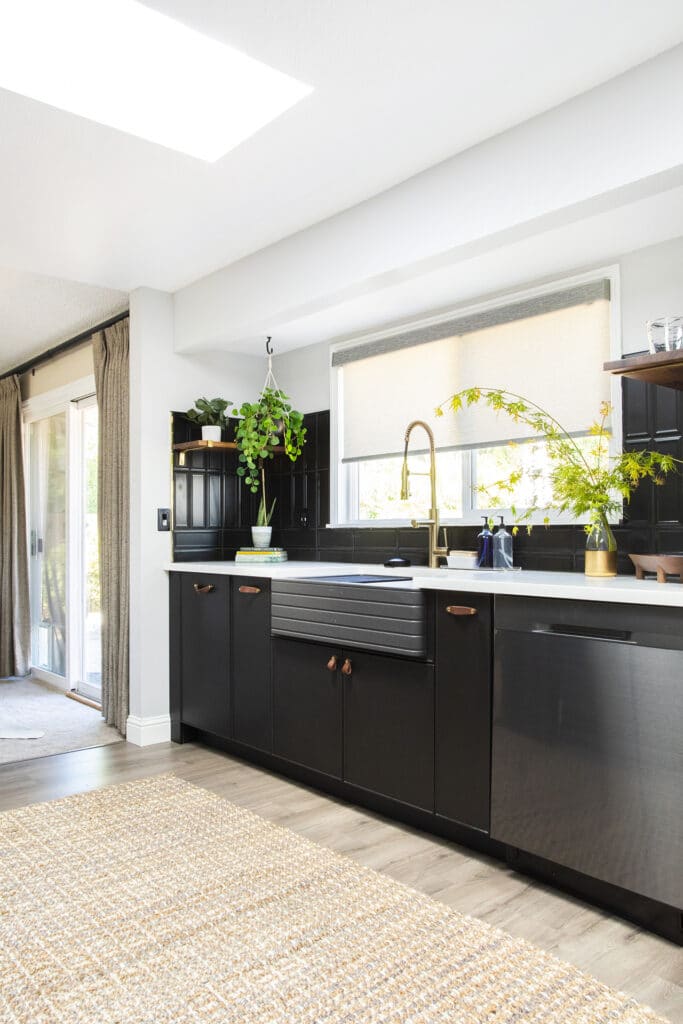
Design by Albie K. Buabeng; Photography by Ellie Lillstrom
Hire Help When Needed
While a contractor did most of the renovations, Buabeng and her husband installed the black tile around the sink. Since they had already tiled their laundry room, they had all the tools they needed to complete the job. “We live in such a DIY-centric period, but it’s OK to hire out,” Buabeng advises. “The contractor got through the heavy lifting in a timeline we would have never been able to meet.” By putting their own sweat equity into the kitchen, the completed project feels that much more special. What was once a dysfunctional, claustrophobic kitchen is now highly designed and well organized.





